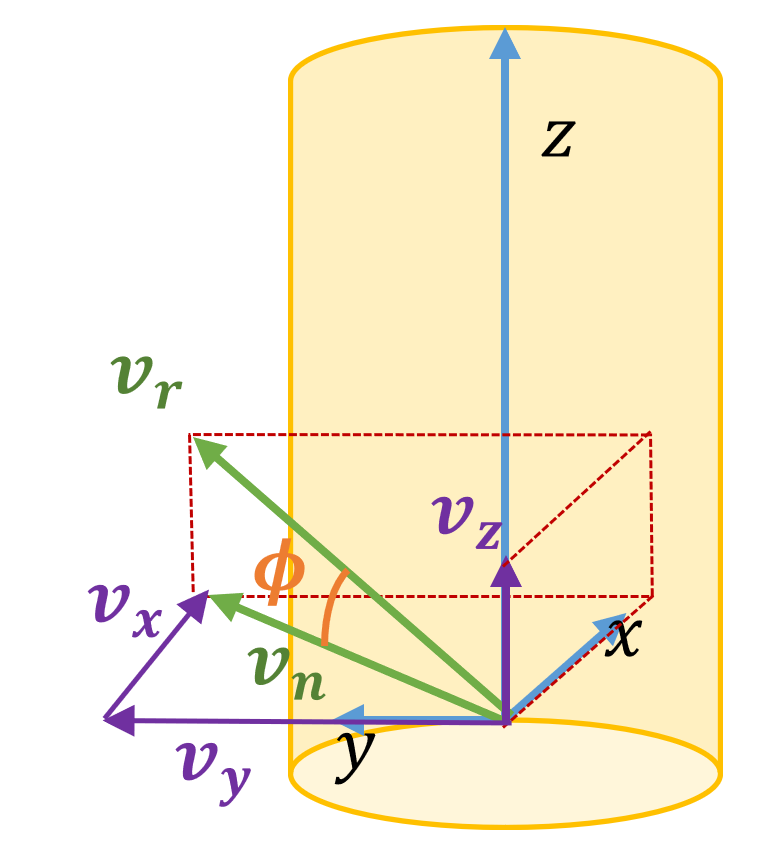Introduction
Aerodynamic drag forces can be applied to the tower. The applied force is computed per unit length at the end of each tower element. The total load intensity is then computed by integrating the force per unit length at each element end across the length of the element.
Tower drag load
For computation of drag forces, the relative wind velocity to the tower \(\bvector{v_r} = \bvector{v_a} - \bvector{v_t}\) is used to derive a component normal to the tower element axis \(\bvector{v_n} = (v_x, v_y)\). For the coordinate system used for this calculation please consult Figure 1. Note that \(\bvector{v_a}\) is the incident air velocity and \(\bvector{v_t}\) is the tower velocity at the end of a tower element. The magnitude of the component of velocity normal to the element axis is \(|\bvector{v_n}|\). The angle of incidence between \(\bvector{v_n}\) and \(\bvector{v_r}\) is denoted \(\phi\). The component of velocity parallel to the element axis \(v_z\) is not included in the computation of drag load.
The local drag force computation uses the drag coefficient \(C_d\) and the diameter \(D\) of the element end. The drag force computation is completed using the following equation:
where \(\bvector{f}= (f_x, f_y)\) is the aerodynamic drag force (per unit length) normal to the element axis.
Written in terms of the velocity \(\bvector{v_r}\) with magnitude \(|\bvector{v_r}|\) then
which aligns with DNV RP-C205 for the calculation of drag forces due to wind loads on structures.
Last updated 30-08-2024
